Community Impacts of Hurricane Ivan:
A Case Study of Orange Beach, Alabama
J. Steven Picou and Cecelia G. Martin
Department of Sociology, Anthropology and Social Work
University of South Alabama
Mobile, Alabama
2006
A printable version of this QR report is available in PDF format.
Any opinions, findings, and conclusions or recommendations expressed in this material are those of the author(s) and do not necessarily reflect the Natural Hazards Center.Citation: Picou, J.S. and C.G. Martin. 2006. Community Impacts of Hurricane Ivan: A Case Study of Orange Beach, Alabama. Quick Response Research Report 190. Boulder, CO: University of Colorado Natural Hazards Center. http://www.colorado.edu/hazards/research/qr/qr190/qr190.html.
Abstract
On September 15 and 16, 2004, Hurricane Ivan struck the Alabama/Florida coast with sustained winds at 130 mph. Severe destruction occurred in the small, coastal community of Orange Beach, Alabama, which has experienced increased tourism and rapid population growth over the last 20 years. Disaster research has revealed that natural disasters, such as hurricanes, tornadoes, and floods, affect communities not only economically, such as through the physical loss of structures, business closures, loss of tax revenues, etc., but also through negative psychosocial consequences for residents. Timely recovery through effective organizational response reduces such negative impacts. This research provides documentation of the economic, social, and psychological impacts of Hurricane Ivan on the residents of the community of Orange Beach, Alabama. Furthermore, an evaluation of community recovery patterns is also presented. A random sample of Orange Beach residents was selected for participation in a mail survey. The data analysis indicated that respondents experienced significant psychological distress and social problems eight months after Hurricane Ivan made landfall on the Alabama/Florida coast. However, the vast majority of respondents also reported high levels of satisfaction for clean-up efforts and rated local, state, and federal agencies as being helpful for recovery.
Introduction
When hurricanes make landfall, they cause extensive physical damage to communities, including destruction of homes, local businesses, and the community infrastructure. Damage to the built environment causes severe social disruption, affecting patterned social behavior and the quality of life of local residents. From 1990 to 2004, seven of the most intense hurricanes recorded struck the U.S. coastline. Hurricane Ivan, which made landfall along the Alabama coast and the panhandle of Florida in 2004, was ranked fourth out of these seven storms. Orange Beach, Alabama, an upscale coastal, tourist community, located in Baldwin County, was directly in the center of Ivan’s path. When Ivan made landfall, wind speeds of approximately 130 mph were combined with a storm surge of 18 to 20 feet.
Damages sustained by Ivan were extensive throughout the Orange Beach community, as well as the surrounding coastal areas. Many homes, condominiums, hotels, and local businesses were either damaged or destroyed. Many residents of Orange Beach were left homeless and unemployed as a result of the storm. A CNN report stated that in “…Orange Beach, buildings and houses were scattered like toothpicks” after Hurricane Ivan (September 18, 2004). In the affected areas of southern Alabama and southwest Florida, 1.5 million households were without power at landfall. Both fire stations in Orange Beach were substantially damaged and a number of annual tourist events, including the International Shrimp Festival held in Gulf Shores (a neighboring community) and the Orange Beach Charter Boat Fishing Rodeo were cancelled.
A recent status report of closed business in the Orange Beach/Gulf Shores area indicated that of the 68 reporting businesses, 24 (35.3 percent) stated that their “business is closed due to Hurricane Ivan and is being redeveloped.” The remaining 44 (64.7 percent) businesses’ status reports were as follows:
- One business (1.5 percent) was planning to open by September 2005;
- 25 businesses (36.8 percent) were planning to open in October 2005;
- One (1.5 percent) business was planning to open in November 2005;
- A condominium (1.5 percent) will reopen in December 2005;
- 11 businesses (16.2 percent) were planning to open in January 2006;
- Another condominium (1.5 percent) is scheduled to reopen by August 2006; and,
-
Four businesses (5.9 percent) reported “opening date not yet determined.”
(http://www.gulfshores.com/closings/)
To date, most of the debris caused by Hurricane Ivan has been removed but remnants of many damaged homes are still highly visible along the beach area. The tourist business is slowly recovering in Orange Beach, with beach rebuilding and renourishment nearly complete over a year after landfall.
A press release from FEMA (March 10, 2005) documented that Alabama had received nearly three-quarters of a billion dollars in disaster response and recovery aid. This aid was distributed to help individuals and households affected by Ivan through funding for housing assistance, medical and dental care, transportation and other expenses not covered by insurance, or other programs. In addition, low-interest disaster loans, food stamps, unemployment assistance, and “project rebound” (a mental health outreach service) were made available to individuals. Public assistance was also provided at the county level. FEMA aid to Baldwin County (November 15, 2004) totaled $14,640,916 for housing assistance; for “other needs” assistance, $10,480,975 was distributed.
The primary objective of this report is an analysis of the community impacts of Hurricane Ivan for Orange Beach residents. Furthermore, this report will document the satisfaction of residents with recovery efforts approximately eight months following the storm.
Brief Overview of Disaster Research
Disasters are events that are ”…concentrated in time and space, in which a society, or a relatively self-sufficient subdivision of a society, undergoes severe danger and incurs such losses to its members and physical appurtenances that the social structure is disrupted and the fulfillment of all or some of the essential functions of the society is prevented” (Fritz 1961:202). Therefore, any event that is “extraordinary,” or beyond normal everyday experiences, is potentially a social stressor to people and communities. Disaster researchers, emergency management responders, and the governmental-legal system all recognize that there are two basic types of disasters, commonly classified as either “natural” or “technological” (Cuthsbertson and Nigg 1987; Erikson 1994; Freudenberg 1997). Disasters are “extraordinary events” and both natural disasters (hurricanes, floods, earthquakes) and technological disasters (toxic contamination, plant explosions, oil spills) disrupt communities and generate collective stress (Bolin 1982; Erikson 1994; Arata et al. 2000; Picou, Marshall, and Gill 2004).
Natural disasters are generated from the natural biophysical environment, while technological disasters have human causes, reflecting cultural values and societal practices (Erikson 1994). Thus, while natural disasters are “out of human control,” the manner in which a natural disaster negatively affects an area can be managed with appropriate social preparation and response. In turn, the degree to which a natural disaster affects an area at risk for such events also reflects cultural values and societal practices (i.e., living on the coast and the risk of hurricane landfalls).
Community recovery from natural disasters has been defined as the “longer-term efforts to rebuild the disaster-stricken community and its institutions” (Tierney and Baisden 1979). The restoration of damages and services to the built environment is a primary goal of communities impacted by natural disasters. Research by social scientists since the late 1940s has documented that natural disasters (hurricanes, earthquakes, and floods) are acute, life-
threatening events that primarily destroy the “built” and “modified” environments. Prevention of this type of destruction has resulted in social change as it relates to revising and improving building and engineering codes, developing sophisticated warning technologies in meteorology and seismology, and concomitantly developing emergency response plans and evacuation procedures that are timely and effective. Disaster researchers have traditionally described the response to natural disasters as entailing an “amplified rebound.” For natural disasters, there is political and societal consensus that: (1) a disaster occurred; (2) there are legitimate victims; and (3) rescue, restoration, and recovery should be “automatically” supported by federal, state, and local government, as well as by voluntary relief organizations.
Interestingly, Murphy (2004:263) contends that the state as a regulator of social activities may indeed result in promoting, albeit unintentionally, disasters when its role is “…restricted to post-disaster reimbursement, rather than the regulation of development that lies in harm’s way.” In addition, sociologists Sylves and Waugh (1996) and Quarantelli (1998) have noted that industrialization often exacerbates and increases the frequency and the costs associated with natural disasters. For example, Hurricane Camille was the only category 5 hurricane to strike the United States this century. A total 256 people were killed. In terms of economic impacts, however, Camille ranks fifth. More recent and less intense hurricanes, such as Andrew, have resulted in significantly greater economic losses to impacted areas, reflecting the increased building development and the recent patterns of migration to coastal regions (Peacock, Morrow, and Gladwin 1997). Skidmore and Toya (2004) further contend that, despite the risks, the negative impacts of climatic disasters are positively correlated with economic growth, further exacerbating the potential for disastrous consequences to communities.
Peacock, Morrow, and Gladwin (1997) concur with this argument by stating that disasters often facilitate social change in communities. The changes that occur can be initiated by the actual event itself and/or be in process. Nonetheless, local social change can be increased or decreased, depending upon the circumstances of the event. The researchers outline six dimensions of social change that occurred as a result of Hurricane Andrew:
- Hurricane Andrew revealed weakness in the existing social structure, most notably, “…the general lack of effective local government response.”
- Hurricane Andrew brought about the development of new groups and organizations and initiated “…new forms of contact, cooperation and conflict between existing groups and organizations.”
- Hurricane Andrew introduced new resources both human and material to the area, which resulted in economic growth and restructuring, new approaches to community planning, and the introduction of new technology.
- Hurricane Andrew exacerbated existing economic and social racial/ethnic inequities as indicated by the (1) nature and degree of impacts; and, (2) the ability of socially disadvantaged groups to recover from a natural disaster. Peacock, Morrow, and Gladwin contend that: “…as with other disasters, the poorer and more disadvantaged suffered disproportionately and had greater difficulty recovering, a pattern clearly consistent with more normal social processes. It is likely that the consequences will be greater inequality and heightened segregation. However, countervailing these expectations is increased mobilization of these communities through voluntary and non-governmental organizations, and better political representation.”
- Community infrastructure was changed and updated.
- Conflict over scare resources was seen after Hurricane Andrew. The researchers contend that because the recovery process is dependent upon the distribution of scare resources, it is riddled with conflict. During the recovery process from Hurricane Andrew, minorities and the formerly disenfranchised mobilized politically as a result of the inequities associated with the recovery process.
In summary, natural disasters, such as hurricanes, have significant consequences for community social structure and promote various patterns of social change in impacted communities.
Conceptual Framework
Social crisis situations emerge when any type of disaster impacts human communities (Kreps 1989, 1998). The consequences of disasters “involve conjunctions of historical conditions and social definitions of physical harm and social disruption” (Kreps and Drabek 1996:133). Preexisting social structure is a critical characteristic of communities that define certain groups as being more vulnerable than others to disaster impacts (Dynes 1993; Oliver-Smith 1996). Although natural disasters historically have been found to have relatively minor long-term community impacts, the potential for chronic impacts relates to the timeliness and effectiveness of recovery and restoration efforts (Mileti, Drabek, and Haas 1975; Quarantelli 1985; Drabek 1986; Green 1996). Indeed, for human-caused technological disasters, the advent of class-action and individual lawsuits, rather than being a solution to securing damage payments from “principle responsible parties,” actually becomes one source for long-term social disruption and stress (Picou, Marshall, and Gill 2004).
More generally, when the disaster event is characterized by anthropogenic conflict, the severity and duration of community impacts may be exacerbated for survivors (Picou, Marshall, and Gill 2004:1498-1499). This point is true for both “natural” and “technological” disasters. Given this perspective, Picou, Marshall, and Gill (2004) propose a “general interpretive framework” for researching disaster impacts (see Figure 1). This framework posits community social structure as the initial source for vulnerability and/or resilience as impacts emerge and a recovery discourse dominates between survivors and a wide-range of public, volunteer, and corporate agencies (insurance). The social construction of the disaster event evolves and continued social conflict, or a consensus-based recovery process, characterizes impacted communities. This model of understanding disaster impacts will serve as a guide to the data analysis presented in this report.
Research Objectives
The overall objective of this research is to provide an analysis of the community impacts of Hurricane Ivan for Orange Beach residents. More specifically, this report will:
- Provide a demographic overview of the study participants residing in Orange Beach;
- Document the evacuation behavior of Orange Beach respondents;
- Document the economic impacts of Hurricane Ivan on Orange Beach residents;
- Document the social impacts of Hurricane Ivan on Orange Beach residents;
- Document the psychological impacts of Hurricane Ivan on Orange Beach residents; and,
- Document Orange Beach respondents’ perceptions of the recovery efforts.
The Community of Orange Beach
Orange Beach is a small, picturesque Alabama tourist community, located approximately 65 miles from Mobile, Alabama, and 35 miles from Pensacola, Florida. According to 2004 census data, the estimated population is 4,692. However, since 1990, the population has increased by over 2,400 residents, reflecting the global trend of increased coastal migration. Figure 2 presents population changes for the entire state, Baldwin County, and the community of Orange Beach. In terms of population changes from 1990 to 2004, the state of Alabama has grown at a rate of 12 percent, while the county’s population increased by nearly 70 percent. However, Orange Beach experienced an extraordinary high level of growth, at a rate of 94 percent over the same period. This rapid increase in residents was nearly nine times that of the state and five times larger than in the county.
In addition to its permanent population, Orange Beach is home to both summer and winter seasonal residents. Approximately 40,000 “snowbirds” reside in Alabama’s coastal region, beginning in early fall until the late spring months. During the summer months, hundreds of thousands of individuals visit Orange Beach to enjoy the beautiful white sand beaches, engage in inshore and offshore fishing, and participate in numerous recreational activities.
Orange Beach was incorporated in 1984 and now has a mayor and five city council members. The community offers a variety of services for its residents, inclduing police and fire departments, aquatics, community, recreation, tennis and senior activity centers, a sportsplex, a museum, and a public library.
Figure 3 presents data on community growth over the past three years. The data presented in this figure is based on annual reports published by the community. In all three years, the number of fire department emergencies, municipal court cases, and business licenses issued has increased. In addition, during this same time period, revenues from sales taxes increased by 27 percent, by 24 percent from lodging taxes, and by 26 percent from business licenses. Again, these statistics reflect a consistent pattern of growth for the Orange Beach community. The projected accommodation inventory for 2006 will increase from 7,607 units as of December 2003 to 9,129 units in 2006—an increase of 20 percent.
This pattern of rapid growth and development provides the context for Hurricane Ivan’s landfall. Although several smaller hurricanes have moved through the Orange Beach area since 1995, none were as intense or as destructive as Ivan. However, by the fall of 2004, Orange Beach had experienced rapid growth in the construction of homes, condominiums, recreational venues, and businesses. In addition to increased property values, a significant increase in residents was also seen from 1990 to 2004.
Hurricane Ivan: Meteorological Background (1)
Hurricane Ivan struck the coast of Alabama and the panhandle of Florida on September 16, 2004, with maximum sustained winds of 130 mph, impacting six states,(2) spawning numerous tornadoes, and causing extensive destruction as it progressed from East Africa to the Gulf Coast of the United States. As shown in Figure 4, at landfall, tropical force winds extended outward nearly 300 miles from its center (http://www.hurricaneseason2004.com/Hurricanes/h_i.html). From September 9 to 13, Hurricane Ivan intensified to category 5 strength on three separate occasions. The storm lasted for 22.5 days and traveled an impressive 6,640 miles.
Figure 5 depicts the number of major hurricanes to strike coastal states in the region, and shows that Texas and Louisiana experienced the most storms. Interestingly, of the 34 major hurricanes to enter the Gulf of Mexico since 1900, only nine have occurred since 1970. Of those nine, three have made landfall on the Alabama coast.
Based on a report by Munich Re, Hurricane Ivan ranked third in terms of economic losses for 2004 natural catastrophes, worldwide (http://www.timesonline.co.uk/article.0,,3-1418747). As time passes, there are many who predict that it will rank second in terms of economic damages for hurricanes striking the U.S. coastline. Preliminary estimates place damages at over $12 billion (http://lwf.ncdc.noaa.gov/oa/reports/billionz.html). Ivan’s westward track to the Alabama/Florida coastline began early September in the Atlantic as a low pressure system. Tropical systems generally need rotation to form at low latitudes such as along the equator. This fact made Ivan unusual because it formed at a low latitude (http://www.hurricaneseason2004.com/Hurricanes/h_i.html). On September 3, Ivan became a named storm with sustained winds of 40 mph. On September 5, its status was upgraded to that of a hurricane and two days later it struck the island of Grenada, resulting in 39 deaths. By September 9, the wind speed of the storm had increased to 160 mph. Weakening wind speeds and a westerly turn spared Jamaica; however, at this stage seven deaths were already attributed to Ivan.
Ivan’s wind speed, once again, intensified to a category 5 level, as the storm moved west-northwestward away from Jamaica. By September 12, it had dropped to a category 4 storm. As Ivan approached Grand Cayman Island, it re-strengthened and the center passed just south of the island. Ivan next entered the southern Gulf of Mexico on September 14 and turned north-northwestward and then northward. Environmental conditions were not favorable for increasing its intensity and Ivan weakened to a strong category 3 storm. A northeasterly turn shifted landfall from Mobile, Alabama, to eastern Baldwin County. As Ivan made landfall on the Alabama and Florida coastlines, it was still classified as a strong category 3 storm. Consequently, Pensacola and eastern portions of Baldwin County received the worst damage associated with Hurricane Ivan. As Ivan moved across Alabama, on September 17, it had weakened into a tropical depression. The storm became an extratropical low on September 18 over the DelMarVa Peninsula. Eventually, this low moved across the southwest to the Atlantic and moved through southern Florida on September 21. Amazingly, Ivan regained tropical strength and, once again, made landfall a second time as a mild tropical depression, impacting southwestern Louisiana. The storm finally dissipated over the upper Texas coastal area, just northwest of Beaumont. Throughout its journey, Hurricane Ivan was ultimately responsible for 52 deaths in the United States (http://lwf.ncdc.noaa.gov/oa/reports/billionz.html). In the Orange Beach area, there were no recorded fatalities.
While Ivan was a record storm for the 2004 hurricane season, its place in the record book in terms of intensity and recorded damages will likely drop after the impacts of the 2005 hurricane season are thoroughly evaluated. The 2005 hurricane season was record-breaking along many lines. There were 27 named storms and three additional unnamed tropical depressions. Three of these storms, Katrina, Rita, and Wilma, reached category 5 levels, with wind speeds of 175 mph being documented at various points during their movement through the Gulf of Mexico. Hurricane Wilma had the lowest barometric pressure ever recorded at 882 mb. In addition, Hurricane Dennis was a category 4 storm and was the strongest storm on record to form before August. All four hurricanes struck the Gulf Coast and caused numerous deaths and extensive damage to the built environment. At this point, damage estimates are inconclusive, but for Hurricane Katrina, the most expensive natural disaster in U.S. history, estimates approach $200 billion. Hurricane Katrina will also rank as one of the most deadly hurricanes, with over 1200 recorded deaths. (http://www.hurricaneseason2004.com/Hurricanes/h_i.html).
Methods
A list of residential addresses in Orange Beach was obtained from information available through various real estate listings and software packages. A random sample of 800 addresses was selected from a comprehensive listing and surveys were mailed out to each household. Of the 800 surveys mailed, 125 were found to be undeliverable. Reminder cards were mailed one month after the initial mailing. A total 268 surveys were completed and returned for a final response rate of 39.7 percent. Data were coded and entered into a SPSS database for analyses and interpretation.
Measures
The data analysis was conducted using SPSS for Windows. A principle components factor analysis was conducted on various questionnaire items to determine appropriate scales. Factor analysis allows for the identification of patterns among the variations of responses to several variables. Variables are identified that cluster together in terms of intercorrelations. A number of scales were developed and utilized in the data analysis. These scales, or factors, are independent of each other and identify different dimensions of latent variables that are relevant for identifying patterns which characterize the responses of subjects (Tatsuoka 1988).
The Impact of Events Scale (IES) was utilized as the primary indicator of psychological stress resulting from Hurricane Ivan. This scale measures event-related cognitive and behavioral responses that have occurred over the last week for a specific stress-producing event. The IES consists of 15 items that provided statements of potential responses to an extraordinary event, such as a hurricane or an earthquake. The contents of the scale were originally developed from statements made by individuals who had personally experienced stressful events (Horowitz 1974, 1976; Horowitz, Milner, and Alverez 1979; Horowitz 1986). The conceptualization of the IES is directly related to the fact that the more stressful an event, the more likely that it will produce an increased incidence of recurring, distressing ideas, thoughts, and feelings and deliberate attempts to avoid or suppress such intrusive, cognitive reminders of the specific stressful event (Horowitz, Milner and Alverez 1979).
The IES is a valid and reliable indicator of event-related psychological stress and has been utilized in the sociological and psychological disaster research literature. The IES has also been found to be correlated with patterns of Post-Traumatic Stress Disorder (PTSD) experienced by residents of communities that have been severely impacted by disasters (Davidson, Smith, and Kudler 1989; Shore, Tatum, and Vommer 1986). Some researchers have argued that the IES actually underestimates the severity of stress patterns experienced by victims of disasters (Shore, Tatum, and Vommer 1986). Nonetheless, the IES provides a direct measure of event-related psychological stress and also serves as an empirical indicator for inferring symptoms of PTSD (Arata et al. 2000). For the purposes of this research, we utilized only the intrusive or cognitive component of the scale. The seven-item intrusive stress scale can be found in Appendix A. The Cronbach’s alpha calculated for this scale was .89.
Personal depression was measured by a modified version of the Center for Epidemiological Studies Depression Scale (CES-D). This scale, like the IES, measures experiences over the last seven days. The depression scale solicits self-ratings of the daily frequencies of such experiences as feeling sad, feeling lonely, having trouble concentrating, etc. The complete 10-item scale is provided in Appendix A (Mirowsky and Ross 1989:188). Scores on this summated depression index range from 0 to 70. The Cronbach’s alpha calculated for this scale was .96.
We also constructed the following scales:
- Personal Distress scale (Cronbach’s alpha = .75). The specific survey items included in this scale are:
- “Since Hurricane Ivan, there have been more arguments in my family.”
- “I have worried about the recovery efforts in Orange Beach since Hurricane Ivan.”
- “Since Hurricane Ivan, I have had more difficulty trusting others.”
- “Since Hurricane Ivan, I have worried about living on the coast.”
- “The community of Orange Beach will never be the same because of the effects of Hurricane Ivan.” - Satisfaction with Recovery scale (Cronbach’s alpha = .81). The specific survey items that comprise this scale are:
- “How satisfied or unsatisfied have you been with:”
- “debris clearance”
- “road restoration”
- “beach restoration”
- “removal of damaged condos”
- “dredging of waterways” - Impact Severity scale (Cronbach’s alpha = .64). The scale items are listed below:
- “How many days were you without electricity?”
- “How many days were you without a telephone?” - Level of risk by location was defined as proximity to the water and designated as either a high-risk location or as a low-risk location.
- Homeowner’s insurance disruption was measured by the following two items:
- I have spent too much time working with my insurance adjustor.
- Working with my insurance company has been a stressful experience.
Results
In this section, a discussion of the research findings will be presented. We analyze data for the following: (1) demographic characteristics; (2) evacuation behavior; (3) economic impacts; (4) social impacts; (5) perception of recovery and recovery efforts; and (6) psychological impacts.
1. Demographic Characteristics of the Sample
Table 1 presents a demographic profile of Orange Beach residents who completed the mail survey. The vast majority of participants were married (76.9 percent) and had their primary residence in Orange Beach (81.4 percent). Approximately 45 percent had graduated from college. In addition, nearly all of the respondents were white (97.2 percent) and the majority were male (56.2 percent). The average age of respondents was approximately 54 years and the mean reported income was in the range of $40,000 to $49,999. In terms of household demographics, average household size was slightly above two people and the average number of years respondents owned their present home approached nine years.
Figure 6 presents a map of the community of Orange Beach. For the purposes of this study, the community was divided into five geographical areas. The five areas were classified as “high risk” or “low risk” for hurricane-related damage, based on their proximity to the water and the impacts of wind for coastal areas. Three of the areas were classified as “high risk” and include: (1) Ono Island; (2) Terry Cove; and, (3) Beach Boulevard. The remaining two areas were defined as “low risk;” as indicated by the map, they are located more inland than the other three areas. These areas were defined as: (1) Canal Road, east of Highway 161; and (2) Canal Road, west of Highway 161.\
Respondents were asked to indicate in which area of Orange Beach they resided (see Table 2). Of the five areas, 10 percent of respondents reported living in Terry Cove; 16.6 percent lived on Ono Island; another 16.2 percent resided in and around the area of Canal Road, west of Highway 161; and nearly half of respondents (49.8 percent) reported living within the area of Canal Road, east of Highway 161.
2. Evacuation Behavior of Orange Beach Respondents
The majority of respondents evacuated for Hurricane Ivan (81.3 percent). For those who did not evacuate, most stayed in the local community. Respondents reported that it took an average of six hours to reach their eventual evacuation destination. Orange Beach residents were away from their homes, on average, for 11 days.
Most Orange Beach residents who evacuated actually stayed in Alabama (see Table 3), traveling to the more northern areas of the state (62.5 percent). Slightly more than a third (34.9 percent) evacuated to other southeastern states such as Florida, Mississippi, and Georgia with a very small proportion (2.6 percent) evacuating to states such as Arkansas, West Virginia, and Colorado. In summary, this very high evacuation rate (i.e., 4 out of 5 respondents), was an important fact that reduced personal injury and loss of life for Orange Beach residents.
3. Economic Impacts of Hurricane Ivan
In Table 4, respondents reported that they had experienced significant damage to their homes (91.2 percent) as well as damage to trees and landscape (82.8 percent). Approximately 25 percent reported damage to storage buildings, while one out of ten reported damage to docks and piers. Less than 10 percent of respondents experienced losses to their swimming pools and boats.
On average, respondents reported approximately $36,000 in damages to their homes and nearly $50,000 in damages to other properties, such as piers, trees, landscape, and boats (see Figure 7). Respondents also lost close to $11,000 in income as a result of the destruction caused by Hurricane Ivan. This income loss is related to the fact that 56.2 percent of respondents reported missing work as a result of Hurricane Ivan, with 45 days being the average number of days they were out of work.
Figure 8 documents financial losses to respondents’ homes by area of residency in Orange Beach. Beach Boulevard sustained the greatest amount of losses with a reported average loss of slightly more than $113,000. This relatively high damage to homes reflects the fact that beachfront homes and condominiums were highly vulnerable to Ivan’s winds and storm surge. Furthermore, beachfront residences are also the most expensive housing in Orange Beach. Residents of Ono Island and Terry Cove, both upscale residential areas, reported losses ranging from $43,000 to $48,000, while those residing along Canal Road, both east and west, had the least amount of reported losses ($24,454 and $18,253, respectively). These patterns of reduced financial losses in these two areas reflect the relatively inland housing locations that border Canal Road. In addition, Ivan’s storm surge was relatively minor in this area, with flooding only occuring in homes adjacent to Perdido Bay.
In terms of utilities, respondents reported that they were without electricity, on average, for 12 days and telephone service for 9 days (see Figure 9). The average number of days without cable service was approximately 52. However, in terms of cable service, respondents indicated that after a period of three to four weeks, many switched to satellite providers for their television service.
4. Social Impacts of Hurricane Ivan
When asked about the impacts of Hurricane Ivan on the community of Orange Beach, Figure 10 reveals that approximately 59 percent of the respondents stated that they did not believe that the community of Orange Beach would ever be the same. On the other hand, 41 percent did believe that the community would recover to its pre-Ivan state. Nonetheless, these results imply that a majority of our respondents believe that significant social change will characterize the community over the next several years.
When asked if they worried about living on the coast, nearly 50 percent (see Figure 11) stated that they either “agreed” or “strongly agreed” with that statement. Slightly more than half of the respondents were “not worried” about occupying residences on the Gulf Coast. These results show that many community residents are now very concerned about the risk of future hurricanes. Given the fact that prior to Hurricane Ivan, no major storm had seriously impacted the local area since Hurricane Frederic in 1979, this pattern of concern is interesting. Following 25 years of relatively minor storms, Hurricane Ivan has resulted in increased apprehension and worry about living on the Gulf Coast for a significant number of Orange Beach residents.
The tremendous damage and social disruption caused by Ivan raises issues of conflict and trust among survivors. Oftentimes, disasters produce social contexts that are characterized by people who are attempting to take advantage of victims, through price-gouging and other means. As such, collective trust patterns break down and oftentimes survivors become revictimized during the recovery process. Figure 12 reveals that approximately one out of every three respondents reported that they have had “more difficulty trusting others” after Hurricane Ivan.
The data presented in Figure 13 reveal that nearly a quarter of the respondents (23.3 percent) reported that arguments had increased among family members. This pattern suggests that increased levels of event-related stress have resulted in family conflict for Orange Beach residents.
Hurricane Ivan caused severe damage to homes throughout the Orange Beach community. An important issue related to successful and timely recovery directly concerns social interaction and discourse with one’s insurance provider. Slightly less than 42 percent of respondents reported that “working with their insurance company was a stressful experience,” identifying a stressor that was secondary to the original destruction of the built environment (see Figure 14). Insurance providers are one important source of anthropogenic conflict that is independent of the destruction that occurred to the built and modified environment of the community. When disaster survivors report conflict in ensuing relations with insurance providers, one can expect longer-term social impacts and a range of potential obstacles to timely recovery.
5. Perceptions of Recovery and Recovery Efforts
Respondents’ assessments of the helpfulness of various support agencies and social groups are presented in Figure 15. In terms of support agencies, the police, the National Guard, and Baldwin Electrical Membership Company (BEMC) were evaluated as “helpful” or “very helpful” by the overwhelming majority (94 percent) of our respondents. For FEMA, the federal agency that has received criticism for its response to Hurricane Katrina, 66.7 percent of respondents reported that the agency was helpful in the aftermath of Hurricane Ivan. Overall, these results suggest a timely and effective response to Hurricane Ivan by those organizations and agencies responsible for restoring services and providing immediate relief. In the social groups category, relatives, friends, and family all were perceived to be helpful by respondents (Figure 15). These data clearly indicate that the organizational response to Ivan’s impacts was incredibly effective. Overall, more than nine out of every ten respondents felt that agencies, organizations, and local community groups were extremely helpful throughout the months following Ivan’s landfall. Relatively little anger and blame was found to characterize recovery efforts, suggesting that anthropogenic sources of blame were minimally identified by survivors.
In terms of satisfaction with services following Hurricane Ivan, Figure 16 indicates a low level of satisfaction with the listed services. Respondents who reported receiving unemployment were by far the most satisfied with these services (46.9 percent reporting they were satisfied). Respondents were least satisfied with the assistance they received with food stamps, with only 25 percent satisfied, and for utility bills, only 22.1 percent of the sample report satisfaction.
For the most part, study participants were satisfied with the level of community recovery attained eight months following Ivan’s landfall (see Figure 17). Respondents were least satisfied with the degree to which damaged and destroyed condominiums had been removed (69.9 percent were satisfied); they were most satisfied with road restoration and debris removal (93.7 percent and 91.9 percent, respectively). Over 75 percent of the respondents reported that they were satisfied with the beach restoration process and the dredging of local waterways
The results reported Figure 18 suggest that the vast majority (78.0 percent) of respondents believe that the community of Orange Beach was at least 50 percent recovered by the damage caused by Hurricane Ivan. In general, the community recovery process appears to be moving along quite rapidly in Orange Beach, eight months after Ivan impacted the local area.
6. Psychological Impacts
In this section of the report, we evaluate the psychological impacts of Hurricane Ivan on Orange Beach community residents eight months after landfall. Specifically for event-related intrusive stress, we compare mean-level stress scores observed for Orange Beach respondents to a number of other disaster events and personal traumatic experiences. Data available from the Livingston, Louisiana, train derailment and toxic spill (Picou and Rosebrook 1993), the Exxon Valdez oil spill (Picou et al. 1992), and clinical patients and rape victims (Gill and Picou 1998) are used to provide a comparison relative to Hurricane Ivan (Figure 19). In general, event-related stress from Hurricane Ivan was comparable to the other case studies. Orange Beach residents had higher stress scores than those observed two years following the Exxon disaster and similar to rape victims two years after experiencing their assault. The data in Figure 19 document that significant levels of event-related psychological stress characterized Orange Beach residents eight months after Ivan impacted the community.
Personal depression scores for Orange Beach respondents were compared to similar data for U.S. women and men (Figure 20). Overall, depression levels were not extremely high for hurricane victims, suggesting modest impacts for this psychological scale. Nonetheless, the data reported in Figure 21 reveal that female respondents in Orange Beach were characterized by higher event-related psychological stress and personal depression scores than their male counterparts.
Multivariate Analysis
To this point, our descriptive analysis of Ivan’s impacts has revealed that devastating destruction occurred to the built and modified environments in the community of Orange Beach. Furthermore, significant economic, social, and personal problems were documented. In this section of the report, we present results from a multivariate analysis that focused on determining what social structural characteristics predict negative social and psychological outcomes. The conceptual model presented in Figure 1 will be used to guide and structure the statistical analysis. Models will be calculated for the following outcome variables:
- community disruption;
- intrusive psychological stress;
- depression;
- recovery satisfaction; and,
- organizational response satisfaction.
As noted in our conceptual model, a number of indicators of social structure will be evaluated as predictors of the outcome variables listed above. Educational achievement, marital status, age, and gender are traditional indicators of social structure that will be used. In addition, other indicators of vulnerability for the community will be used in the analysis, including: (1) high-risk location; (2) total financial loss; (3) desire to sell; (4) insurance problems; and (5) severity of impact.
Turning to the multivariate analysis, Table 5 presents the predictive model for the variable “personal distress.” This variable was a scale constructed from five items that measured family conflict, worry, loss of trust, and personal despair over the impacts of Hurricane Ivan. These variables were found to be statistically significant predictors for personal distress. Specifically, respondents who were experiencing difficultly settling their insurance claims
(B= -.331), respondents with the highest economic losses (B=.241), and those who planned to sell their property (B=.201) had higher levels of personal distress. The model explained 20 percent of the variance in the dependent variable.
Turning to Table 6, a model for event-related psychological stress was calculated. Only two variables were found to be statistically significant predictors. Specifically, age was found to be inversely related to psychological stress (B=-.184). That is, younger respondents were more stressed than older respondents. Furthermore, the variable, personal distress, had a relatively strong effect on psychological stress (B=.383). These results indicate that respondents who suffered high levels of personal distress and those in a younger demographic had the most severe levels of Ivan-related psychological stress. This model explained approximately 20 percent of the variance in psychological stress.
The multiple regression model for personal depression is present in Table 7. Two variables, marital status and personal distress, were found to be statistically significant predictors. Personal distress manifested the strongest beta coefficient (B=.316), while being married manifested a beta coefficient of .257. This model explained approximately 18 percent of the variance for depression.
In Table 8, the final multiple regression model was calculated for the dependent variable “satisfaction with recovery efforts.” Only two variables were found to be statistically significant predictors—total economic loss and personal distress. Interestingly, respondents with the highest economic losses were the most satisfied with recovery efforts (B=.189). However, respondents who were characterized with the lowest levels of personal distress were also found to be more satisfied with recovery efforts (B=-.464). This model explained slightly less than 28 percent of the variance and, once again, highlights the critical role played by the variable “personal distress” for predicting psychological stress, depression, and satisfaction with recovery activities.
To summarize, the multiple regression analysis suggests that respondents who were most personally distressed in Orange Beach were those who were having problems processing their insurance claims, suffered the most economic losses, and planned to sell their residences. In turn, being highly personally distressed resulted in high levels of psychological stress, depression, and dissatisfaction with recovery efforts. Being personally distressed involved having more arguments in one’s family, worrying about both recovery and living on the coast, not being able to trust others, and believing the community will never be the same because of impacts of Hurricane Ivan. This “personal distress syndrome” appears to be the key element for understanding the negative community impacts of Hurricane Ivan. (3)
Summary and Conclusions
Hurricane Ivan was a strong category 3 storm that severely affected the central Gulf Coast region of the United States in September 2004. This coastal area included the small tourist community of Orange Beach, Alabama, which has experienced unprecedented growth and development over the last decade. Many businesses, homes, and condominiums were severely damaged or destroyed. In general, beachfront and waterfront properties suffered the most damage, averaging from $43,000 to $113,000 per residence. Overall, 81 percent of the respondents evacuated the area and utility service was restored to most within two weeks.
The social impacts generated by Ivan included “increased worry about living on the coast,” fears that the community would “never be the same,” loss of trust in others, increased family conflict, and problems reconciling insurance claims. This “personal distress syndrome” was also associated with increased psychological stress and depression, as well as dissatisfaction with recovery activities in the community. Nonetheless, the vast majority of those interviewed were satisfied with how helpful various support agencies and recovery organizations had been in the months following the storm. Furthermore, the vast majority of the respondents were satisfied with clean-up efforts and the restoration of roads, debris removal, beach restoration, and the dredging of local waterways. In fact, three out of every four respondents felt that by eight months after Ivan struck the Orange Beach, the community was 50 to 75 percent recovered from the storm’s impact.
In contrast to the community recovery patterns being observed for more recent Gulf Coast hurricanes, such as Katrina, Rita, and Wilma, recovery from Hurricane Ivan in the Orange Beach community seems to be progressing in a timely fashion. Despite this observation, a significant number of Orange Beach respondents were still experiencing severe personal distress, psychological stress, and depression eight months after Ivan hit the area. These negative impacts have resulted primarily from problems with negotiating with insurance companies and from economic damages incurred by residents. This has caused some respondents (13.2 percent) to plan to sell their property and move out of the community.
In conclusion, the conceptual mode utilized in this research (See Figure 1) was found to be appropriate for our analysis and the evaluation of community impacts. Despite being limited to cross-sectional data, the model clearly provided an interpretative framework for understanding what social structure and disaster characteristics were relevant for understanding the social and psychological impacts that occurred in Orange Beach, Alabama, following Hurricane Ivan’s landfall. Future studies of the community impacts of both natural and technological disasters should utilize and expand this framework to assess the economic, social, and psychological consequences for survivors of future catastrophic events.
Notes
(1) The specific meteorological details are based on a report by Stewart, Stacey, National Hurricane Center, Tropical Cyclone Report, Hurricane Ivan, 2-24 September, 2004, 6/03/05.
(2) States include: Alabama (45 counties); Florida (19 counties); Mississippi (8 counties); North Carolina (16 counties); and, South Carolina (3 counties)
(3) Due to missing data, we suggest caution in the interpretation of the regression analysis. Nonetheless, we use these results as a heuristic model for explaining negative community impacts.
References
Arata, C.M., J.S. Picou, G.D. Johnson, and T.S. McNally. 2000. Coping with technological disaster: An application of the conservation of resources model to the Exxon Valdez oil spill. Journal of Traumatic Stress 13:23-29.
Bolin, R.C. 1982. Long-term recovery from disasters. Boulder, CO: University of Colorado Press
Cutherbertson, B.H. and J. Nigg. 1987. Technological disaster and the nontherapeutic community: A question of true victimization. Environment and Behavior 19:462-83.
CNN.com, 9/18/04.
Davidson, J., R. Smith, and H. Kudler. 1989. Validity and reliability of the DMS-III criteria for posttraumatic stress disorder. The Journal of Nervous and Mental Disease 177:336-341.
Drabek, T.E. 1986. Human system response to disaster: An inventory of sociological findings. New York: Springer-Verlag.
Dynes, R. 1993. Disaster reduction: The importance of adequate assumptions about social organization. Sociological Spectrum 13, 175-92.
Erikson, K. 1994. A new species of trouble. New York: Norton.
FEMA Press Release March 10, 2005.
FEMA Press Release November 15, 2004.
Freudenburg, W.R. 1997. Contamination, corrosion, and the social order: An overview. Current Sociology 45(3):19-40.
Fritz, C.E. 1961. “Disasters” Pp. 651-94 in Contemporaray Social Problems, eds. R.K. Merton and R.A. Nisbet. Harcourt, Brace and World.
Gill, D.A. and J.S. Picou. 1998 Technological disasters and chronic community stress. Society and Natural Resources 11:795-815.
Green, B.L. 1996. “Traumatic stress and disaster: Mental health effects and factors influencing adoption.” Pp. 177-210 in Internatioinal Review of Psychiatry, Volume 2, eds. Felice L. Mak and Carol C. Nadelson. Arlington, VA: American Psychiatric Publishing, Inc.
Horowitz, M.J. 1974. Stress response syndromes: Character style and brief psychotherapy. Archives of General Psychiatry 31:68-81.
Horowitz, M.J. 1976. Stress Response Syndrome. New York: Jason Aronson.
Horowitz, M.J. 1986. “Disaster stress studies: conclusions.” Pp. 142-49 in Disaster Stress Studies: New Methods and Findings, ed. J.H. Short. Washington, D.C.: American Psychiatric Press.
Horowitz, M. J., N. Milner, and W. Alverez. 1979. Impact of events scale: A measure of subjective stress. Psychometric Medicine 41:209-18.
http://www.geocities.com/hurricanene/gulfcoast.htm
http://www.gulfshores.com/closings
http://www.hurricaneseason2004.com/Hurricanes/h_i.html
http://lwf.ncdc.noaa.gov/oa/reports/billionz.html
http://www.timesonline.co.uk/article.0,,3-1418747
Kreps, G. 1989. Disaster and the social order. Sociological Theory 3:49-65.
Kreps, G. 1998. “Disaster as systemic event and social catalyst” in What is Disaster, ed. E. L. Quaratnelli. New York: Routledge.
Kreps, G. and T.E. Drabek. 1996. Disasters as nonroutine social problems. International Journal of Mass Emergencies and Disasters 14:129-153.
Mileti, D.S. T.E. Drabek, and J.E. Haas. 1975. Human Systems in Extreme Environments: A Sociological Perspective. Institute for Behavioral Science: University of Colorado.
Mirowsky, J. and C. Ross. 1989. Social Causes of Psychological Distress. New York: Aldine de Gruyter.
Murphy, R. 2004. Disaster or sustainability: The dance of human agents with nature’s actants. The Canadian Review of Sociology and Anthropology 41(3):40-266.
Oliver-Smith, A. 1996. Anthropological research on hazards and disasters. Annual Review of Anthropology 25:303-328.
Peacock, W. G., B.H. Morrow, and H. Gladwin. 1997. Hurricane Andrew: Ethnicity, Gender and the Sociology of Disasters. Miami, FL: Laboratory for Social and Behavioral Research, Florida International University.
Picou, J.S., B.K. Marshall, and D.A. Gill. 2004. Disaster, litigation and the corrosive community. Social Forces 82(4):1493-1522.
Picou, J.S. and D.R. Rosebrook. 1993. Technological accident, community class action litigation and scientific damage assessment: A case study of court-ordered research. Sociological Spectrum 13:117-138.
Picou, J.S., D.A. Gill, C.L. Dyer, and E.W. Curry. 1992. Stress and disruption in an Alaskan fishing community: Initial and continuing impacts of the Exxon Valdez oil spill. Industrial Crisis Quarterly 6:235-257.
Quarantelli, E.L. 1998. What is Disaster? New York: Routledge.
Shore, J., E. Tatum, and W. Vommer. 1986. Psychiatric reactions to disaster: The Mount St. Helens experience. American Journal of Psychiatry 143:590-5.
Skidmore, M. and H. Toya. 2004. Do disasters promote long-run growth? Economic Inquiry 40(4):664-687.
Stewart, S. 2005. Tropical Cyclone Report, Hurricane Ivan, 2-24 September, 2004. National Hurricane Center.
Sylves, R. and W. Waugh. 1996. Disaster management in the U. S. and Canada. Springfield, IL: Charles C. Thomas.
Tatsuoka, M.M. 1988. Multivariate Analysis. New York: Macmillian
Tierney, K.J. and B. Baisden. 1979. Crisis intervention program for disaster victims. U.S. Department of Health, Education and Welfare. Washington, D. C.
Authors’ Biography
Dr. J. Steven Picou is a Professor and Chair of the Department of Sociology, Anthropology and Social Work at the University of South Alabama. He has been involved disaster research throughout his career and has numerous publications and grants related to this issue. He has also served as an expert witness and consultant on the social and psychological impacts of disasters on communities and individuals. He is the recipient of the Distinguished Contribution Award presented by the Section on Environment and Technology of the American Sociological Association for research on the Exxon Valdez Oil Spill (2001) and is currently serving as a member of the American Sociological Association Katrina Task Force.
Ms. Cecelia G. Martin is a Research Analyst at the University of South Alabama. Her research interests are in the areas of disasters and environmental issues. She has been an investigator on numerous grants and has several publications related to these issues. She has also worked as a consultant on disaster and environmental-related issues.
Acknowlegements
The authors acknowledge Roland Neeson for his timely assistance with the selection of the sample. In addition, the technical support provided by Linda Burcham, Tara Etheridge, Nathan Boyett, and Kylee Kubat is gratefully acknowledged. Direct all comments to Dr. Picou at (251) 460-6347 or spicou@usouthal.edu.
Appendix A
Impact of Events Scale: Intrusive Stress
- I thought about Hurricane Ivan when I didn’t want to.
- Pictures about Hurricane Ivan popped into my mind.
- Other things kept making me think about Hurricane Ivan.
- I had trouble falling asleep or staying asleep because of Hurricane Ivan.
- I had waves of strong feelings about Hurricane Ivan.
- I had dreams about Hurricane Ivan.
- Any reminder brought back feelings about Hurricane Ivan.
Depression Scale
- I felt that I could not get rid of the blues.
- I had trouble keeping my mind on what I was doing.
- Everything that I did took a great effort.
- I felt sad.
- I felt that I could not get going.
- I lost my appetite.
- I had trouble falling asleep or staying awake.
- I felt lonely.
- I was bothered by things that usually do not irritate me.
-
I felt that my life was a failure.
.
Figures
Figure 1. Conceptual model for chronic disaster impacts (Picou, Marshall, and Gill 2004).

Figure 2. Population changes for Alabama, Baldwin County, and Orange Beach: 1990, 2000, and 2004.
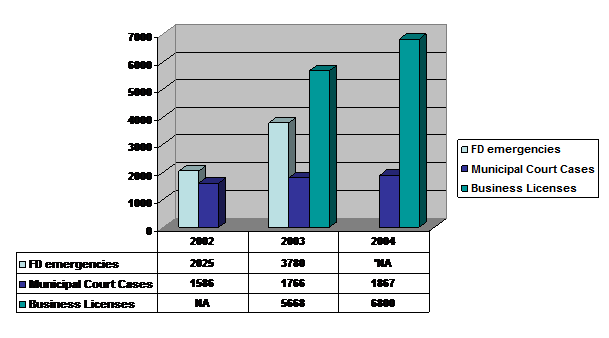
Figure 3. Community support statistics for Orange Beach.

Figure 4. Hurricane Ivan at landfall, September 16, 2005.
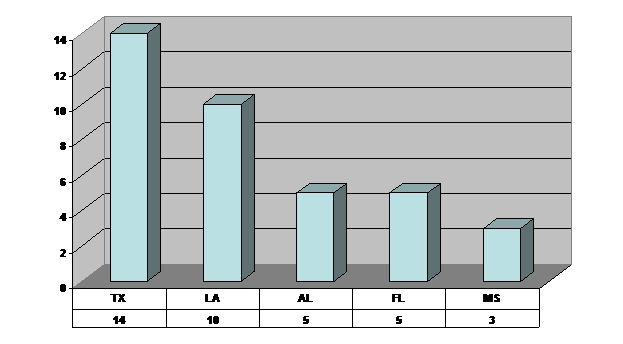
Figure 5. Number of major hurricanes that have impacted Gulf Coast states, 1990-2004.

Figure 6. Map of the Orange Beach community.
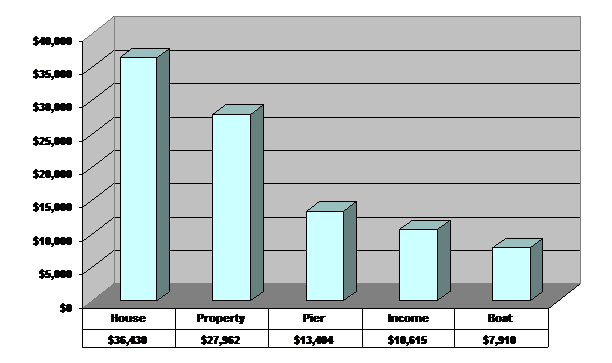
Figure 7. Average economic losses resulting from Hurricane Ivan.

Figure 8. Financial losses to house by area of residency in Orange Beach.
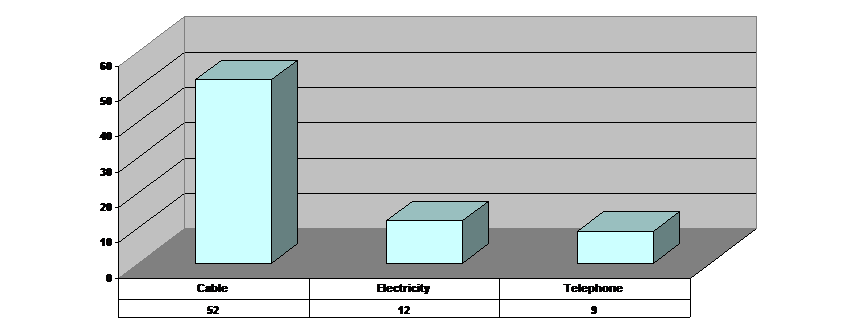
Figure 9. Average days of utility loss following Hurricane Ivan.
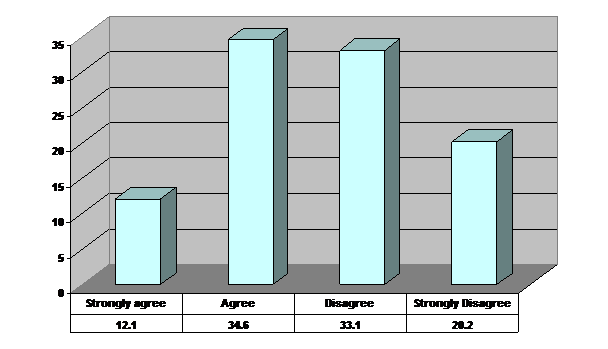
Figure 10. The community of Orange Beach will "never be the same."
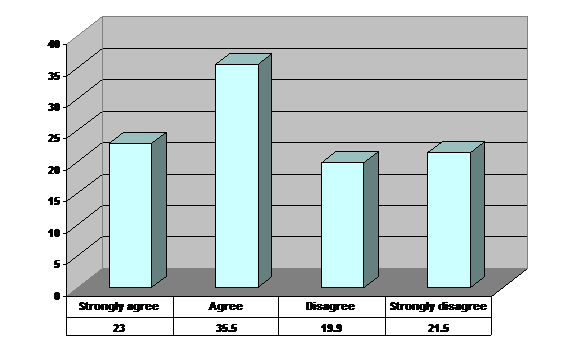
Figure 11. Since Hurricane Ivan, "I have worried about living on the coast."

Figure 12. Since Hurricane Ivan, "I have had more difficulty trusting others."
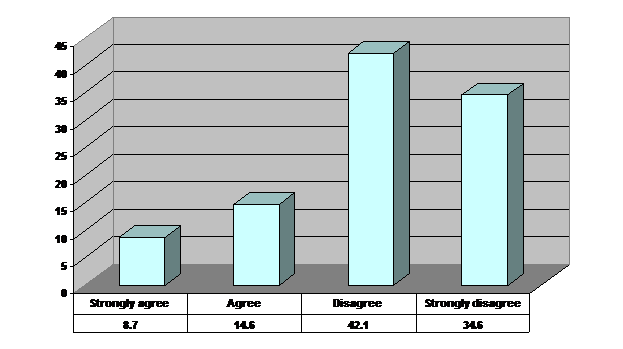
Figure 13. Since Hurricane Ivan, "there have been more arguments in my family."
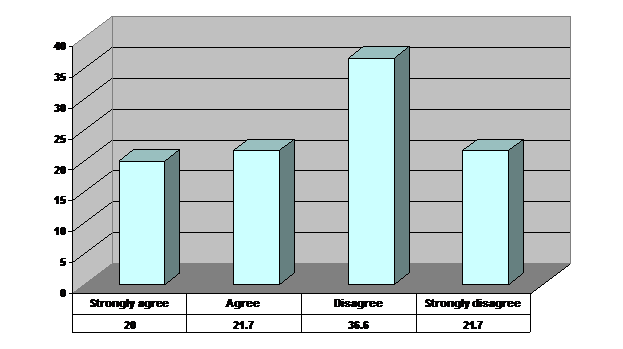
Figure 14. Working with my insurance company has been a stressful experience.
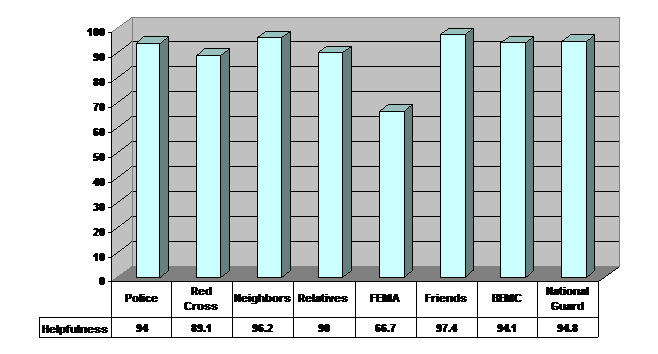
Figure 15. Perceptions of helpfulness of support agencies and social groups by Orange Beach residents.
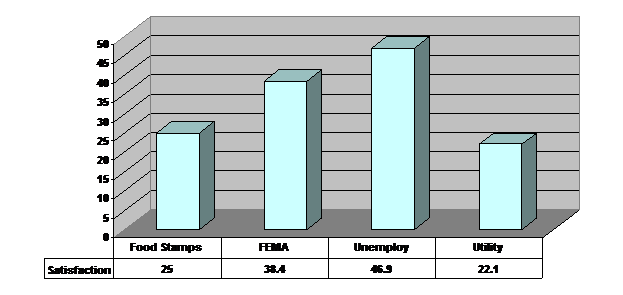
Figure 16. Satisfaction with services received following Hurricane Ivan.
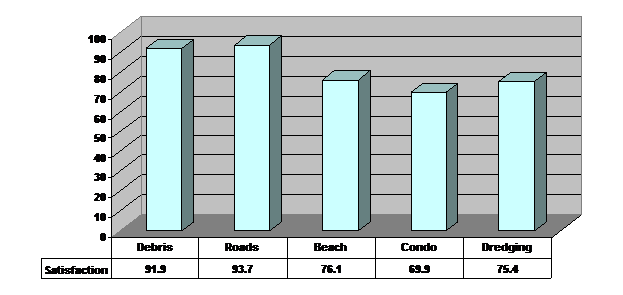
Figure 17. Level of satisfaction among Orange Beach residents of clean-up and recovery efforts.
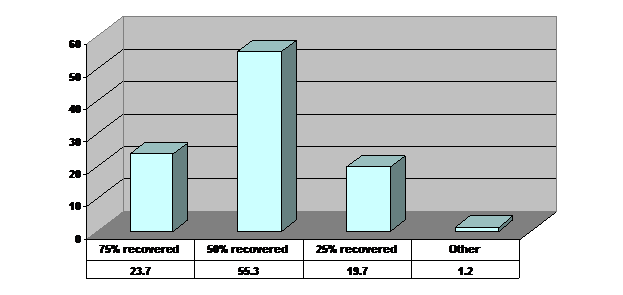
Figure 18. Overall perceptions of community recovery by Orange Beach residents.
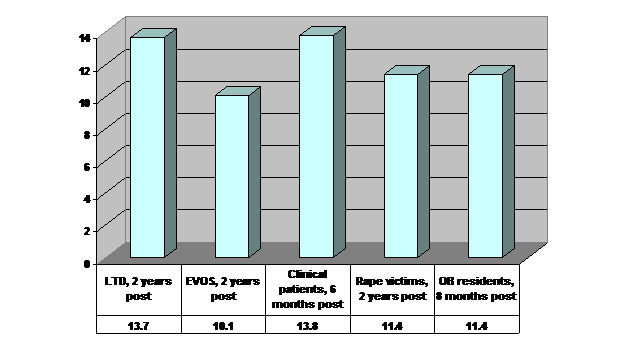
Figure 19. Comparisons of event-related intrusive stress scores for victims of the Louisiana train derailment and the Exxon Valdez oil spill, 2 years post; clinical patients, 6 months post death; rape victims, 2 years post; and Orange Beach residents, 8 months post Hurricane Ivan.

Figure 20. Depression scores of U.S. adults and Orange Beach residents.

Figure 21. Comparisons of psychological distress by gender for Orange Beach respondents.
Tables
| Characteristic | Frequency | Percent/Average |
|---|---|---|
| Married (percent) | 196 | 76.9% |
| Not married (percent) | 59 | 23.1% |
| Educational Attainment | ||
|
8 | 3.2% |
|
37 | 14.6% |
|
94 | 37.2% |
|
114 | 45.1% |
| Race/Ethnicity (percent) | ||
|
242 | 97.2% |
|
7 | 2.8% |
| Gender (percent) | ||
|
140 | 56.2% |
|
109 | 43.8% |
| Orange Beach as primary residence (percent) | 263 | 81.4% |
| Age (average) | 251 | 54.5 years |
| Number of people residing in household (average) | 250 | 2.4 |
| Income range (average) | 230 | $40,000-$49,000 |
| Number of years owning present home (average) | 258 | 8.5 years |
Table 1. Demographic characteristics of Orange Beach residents.
| Residence (1) | Frequency | Percent |
|---|---|---|
| Ono Island | 42 | 16.6% |
| Beach Boulevard | 19 | 7.3% |
| Terry Cove | 26 | 10.0% |
| Canal Road, east of 161 | 129 | 49.8% |
| Canal Road, west of 161 | 42 | 16.3% |
(1) n=258
Table 2. Area of residency of Orange Beach respondents.
| Evacuation Site (1) | Percent |
|---|---|
| Coastal Alabama | 18.2% |
| Other Alabama | 44.3% |
| Southeast states | 34.9% |
| Other regions | 2.6% |
(1) n=192
Table 3. Evacuation site.
| Type of damage resulting from Hurricane Ivan | Percent |
|---|---|
| Damage to house (1) | 91.2% |
| Damage to boat (1) | 9.9% |
| Damage to pier (1) | 10.7% |
| Damage to trees and landscape (1) | 82.8% |
| Damage to storage building (1) | 25.3% |
| Damage to pool (2) | 6.2% |
(1) n=261; (2) n=258
Table 4. Reported damage by respondents.
| Predictor Variable | Standardized Beta | T | Pr |
|---|---|---|---|
| High-risk location | .081 | .897 | ns |
| Total economic loss | .241 | 2.600 | .011 |
| Income loss | -.139 | -1.513 | ns |
| Insurance problems | -.331 | -3.329 | .001 |
| Plan to sell property | .201 | 2.234 | .028 |
| Age | -.009 | -.105 | ns |
| Education | -.005 | -.053 | ns |
| Gender | .021 | .232 | ns |
| Severity of impact | .052 | .555 | ns |
| Marital status | .086 | .941 | ns |
n=108; R2=.278; Adjusted R2=.204
Table 5. Multiple regression analysis for predicting personal distress.
| Predictor Variable | Standardized Beta | T | Pr |
|---|---|---|---|
| High-risk location | .066 | .707 | ns |
| Total economic loss | -.027 | -.274 | ns |
| Income loss | .073 | .763 | ns |
| Insurance problems | -.088 | -.810 | ns |
| Plan to sell property | .041 | .437 | ns |
| Age | -.184 | -2.002 | .048 |
| Education | -.136 | -1.411 | ns |
| Gender | -.079 | -.875 | ns |
| Severity of impact | .074 | .770 | ns |
| Marital status | .054 | .559 | ns |
| Personal distress | .383 | 3.645 | .000 |
n=103; R2=.275; Adjusted R2=.205
Table 6. Multiple regression analysis for predicting event-related intrusive stress.
| Predictor Variable | Standardized Beta | T | Pr |
|---|---|---|---|
| High-risk location | -.041 | -.422 | ns |
| Total economic loss | .117 | 1.151 | ns |
| Income loss | .059 | .599 | ns |
| Insurance problems | -.027 | -.242 | ns |
| Plan to sell property | .068 | .696 | ns |
| Age | -.168 | -1.756 | ns |
| Education | .020 | .202 | ns |
| Gender | .077 | .802 | ns |
| Severity of impact | -.100 | -1.000 | ns |
| Marital status | .257 | 2.636 | .010 |
| Personal distress | .316 | 2.902 | .005 |
n=99; R2=.275; Adjusted R2=.184
Table 7. Multiple regression analysis for predicting depression.
| Predictor Variable | Standardized Beta | T | Pr |
|---|---|---|---|
| High-risk location | -.156 | -1.658 | ns |
| Total economic loss | .189 | 1.941 | .056 |
| Income loss | .018 | .187 | ns |
| Insurance problems | -.033 | -.308 | ns |
| Plan to sell property | -.142 | -1.479 | ns |
| Age | -.168 | -1.777 | ns |
| Education | .053 | .564 | ns |
| Gender | .105 | 1.107 | ns |
| Severity of impact | -.031 | -.324 | ns |
| Marital status | -.157 | -1.626 | ns |
| Personal distress | -.464 | -4.388 | .000 |
n=91; R2=.363; Adjusted R2=.276
Table 8. Multiple regression analysis for predicting satisfaction with recovery efforts.

